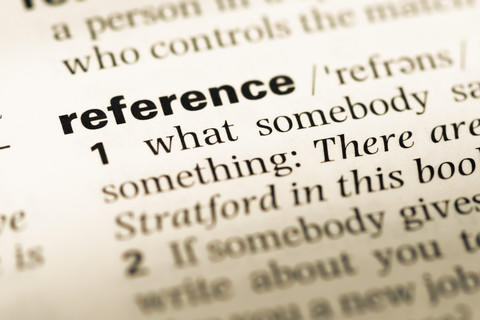Sources and referencing
About source evaluation, citing and reference management
Main content
Research is based on existing knowledge. It is therefore common to refer to others work when using it in a scientific text. Prior to referring to another text, the source should be evaluated.
A reference consists of a citation in the text and the complete reference in the list of references. The references can be written manually or generated using a reference management tool.
Source evaluation
There are many sources of information, but not all of them are relevant and reliable. You should assess a source thoroughly for its quality and relevance before using it in an academic text.
You can find advice on source assessment at Search and Write.
To assess the quality of scientific articles, checklists can be helpful. There are checklists available for various study designs, such as case-control studies, qualitative studies or randomised control trials. To assess studies within medicine and health sciences, the checklists from the Joanna Briggs Institute are helpful.
Text references
When using others work in your text you have to refer to the source. This is to give credit to the author as well as to give your readers the possibility to access your sources. By omitting to refer to your sources you are risking that your text may be perceived as plagiarism. Every statemenet that is not common knowlegde needs a reference to its source.
According to the Intellectual Property Rights Act you are allowed to use small sections of published text as long as you cite the source correctly.
You can find more information on copyright on the University Library's web pages.
Image references
If you use images in your work that are not your own, you have to refer to the image source. Unlike citing text, in most cases you also have to ask the rightholder for permission to use these images.
You can look for pictures with a Creative Commons license or images in the public domain. These licenses give others permission to use them, as long as one refers to their creator and source.
Citing and list of references
When referring to a source, you both write a citation in your text and an associated reference in the list of references. The citation in the text has to contain as much information as needed to find the right reference in the list of references. This may be a specific number or the author's name and the year of publication.
References must contain all information needed to find the source. In addition, the references should be easy to read and understand, which can be ensured by using a consistent style for all references. A reference style is a standard for how a certain type of source is represented as a citation in the text and in the list of references.
Search and Write contains information on the most common reference styles.
There are many reference styles to choose from. Within medicine and health sciences, the most common reference styles are Vancouver and APA 6th. Note that there may be guidelines to which reference style shall be used in your course or study program.
Reference management
When you are dealing with a large amount of references, using a reference management tool can save a lot of time. The software formats references automatically in the reference style you choose.
References can be transferred to the reference management tool from a database or a reference can be created manually. The references saved in the tool can then be easily used in a word processor.
EndNote is a widely used reference management tool that is available both as a desktop and an online version. UiB has purchased a licence for EndNote, giving students and employees the option to downlowd the software, either for Windows or Mac. Helse Bergen has a separate licence.
Zotero is an open source reference managment tool with desktop and online functionality for Windows, Mac and Linux.
On the University Library's website for reference tools you can find a guide for downloading, installing and using EndNote or Zotero. The Medical Library also provides an introduction guide to EndNote.
The library offers courses and user support for EndNote and Zotero. For questions related to EndNote or Zotero, contact us by chat, email or at the circulation desk.
There are various other reference management tools availabe, such as Mendeley or LaTex. Microsoft Word also contains a tool with a small amount of common reference styles.
